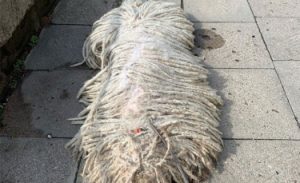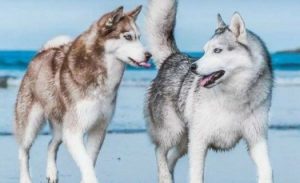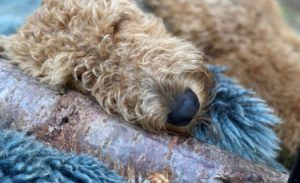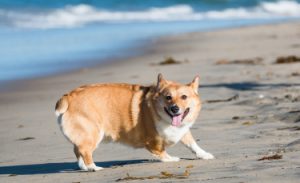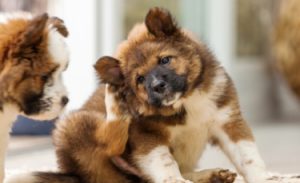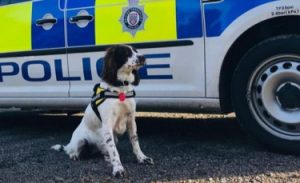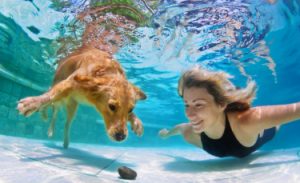Other names: Korean Jindo, Korean Jindo Spitz, Korean Jindo Dog
The Korean Jindo Dog is a Spitz-type dog, of medium size, with harmonious proportions, giving the impression of being at the same time agile, vigorous, vigilant and proud. The gaits of the Korean Jindo Dog are characterized by their regularity and energy. Its head is high when trotting and lower when running.
<!–
–>
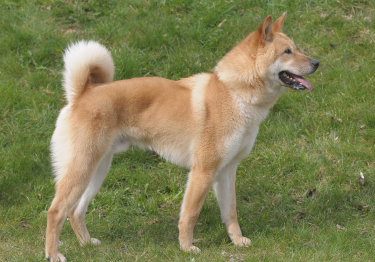
| Half-long | |
| South Korea | |
| Average | |
| Triangular |
| Sex | Weight | Cut |
|---|---|---|
| Female | From 16 kg to 18 kg | From 43 cm to 53 cm |
| Male | From 16 kg to 20 kg | From 45 cm to 56 cm |
History of the breed
The deep historical roots of the Korean Jindo Dog are not documented, but it is established that the breed is several millennia old and originated, as the name suggests, from the island of Jindo .
Physical features
His hair: stiff, rather removed from the body. Longer at the neckline, withers, back, rump and tail. Shorter on the head, limbs and ears. The outer coat is associated with a soft, dense and lighter colored undercoat.
Its color: either one-tone red, white or black fawn, or two-tone black and tan or wolf-gray and brindle.
His head: in the shape of a blunt triangle, without the impression of heaviness or coarseness. The volume of the skull is average compared to the body and its top slightly domed. The stop is well marked, without being excessively marked. The nose is black (which can be flesh-colored in white subjects), the lips also black, thin and well joined. Jaws strong and scissor bite. The cheeks are well developed and dry.
His ears: triangular in shape, quite thick, medium in size, well erected, set at medium height and pointing slightly forward.
His eyes: small, almond-shaped, dark brown in color with a lively expression.
His body: the neck is well proportioned, muscular and thick. The back is strong and straight, the loins well muscled and tense, the chest strong and of average height, the belly raised.
Its tail: attached high, carried in a sickle or rolled up, but not too much. Covered with a dense coat.
Behavior and character
| Affectionate | |
|---|---|
| Calm | |
| Protective | |
| Independent | |
| Hunter | |
| Barks / howls |
Behavior with others
| Cohabitation with children | |
|---|---|
| Sociable with other animals | |
| Love strangers |
the Korean Jindo Dog has retained much of his hunting instincts . He doesn’t really appreciate the presence of other animals, let alone when it comes to males. Also used for guarding, the Korean Jindo Dog asserts its remarkable vigilance, courage, independence and incorruptibility . He is also known to be a dog with unwavering loyalty to his master.
The Korean Jindo Dog
is it right for you? Take the test!
Education
| Clever | |
|---|---|
| Obedient |
Extremely attached to his master, the Korean Jindo Dog is nonetheless a dog whose obedience is not the strong point. His education requires a good dose of firmness , which however excludes recourse to any form of brutality.
Living conditions
| Suitable for apartment living | |
|---|---|
| Good for new masters | |
| Love it hot | |
| Love the cold |
the Korean Jindo Dog is aimed more at owners with a fairly good experience in dog training, especially those who know how to take in hand dogs with the primitive and independent character of the Asian Spitz. It is less inclined than other breeds to join in a family life with children and other animals. A house with a fenced garden suits him much better than an apartment.
Health
| Solid | |
|---|---|
| Ease of gaining weight |
the Korean Jindo Dog is a robust dog characterized by solid health . Its double coat gives it fairly good protection against harsh climatic conditions. There is no predisposition to a particular disease in this breed.
Hypoallergenic breed
No
Litter size
Between 4 and 8 puppies
| Major concerns |
|
| Occasional concerns |
|
||
| Suggested tests |
|
To protect yourself from these risks and insure your companion in the event of health problems, Woopets recommends dog insurance for Korean Jindo Dog .
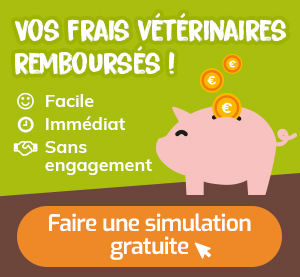
function showAssuranceForm () {var siteReferer = var id_race_association = ”; //console.log(id_race_association);success: function (html) {}});}document.addEventListener (‘DOMContentLoaded’, () => {$ (‘# assuranceModalBanner’). on (‘show.bs.modal’, function (event) {showAssuranceForm ();});});
Life expectancy
Minimum: 11 years old
Maximum: 13 years
The life expectancy of a Korean Jindo Dog is, on average, between 11 years and 13 years.
Calculate the human age of your Korean Jindo Dog!
To choose… 1 year 2 years 3 years Four years 5 years 6 years 7 years 8 years 9 years 10 years 11 years old 12 years 13 years 14 years old 15 years old 16 years old 17 years 18 years old 19 years old 20 years 21 years old
Maintenance and hygiene
| Ease of maintenance | |
|---|---|
| Cost of maintenance | |
| Hair loss |
| Drool level | |
|---|---|
| Ease of grooming |
the Korean Jindo dog does not require a particularly restrictive maintenance . Subject to 2 moults per year, he is a dog known to be clean.
It is recommended to brush the dog weekly to preserve the beauty of his coat. During the moult, brushing becomes more frequent to remove dead hair. It does not need to be bathed frequently.
Its hair, ears, eyes and pads should be examined after each outing in the wild to detect and remove any debris or external parasites. Her teeth need to be brushed regularly to eliminate tartar build-up and the proliferation of bacteria. Finally, if they do not wear out naturally, its claws need to be cut. If you are new to this, it is recommended that you seek advice from a veterinarian or groomer.
Price and budget
Purchase price
Mini
900 € Maxi
€ 1,100
The purchase price of a Korean Jindo Dog is between 900 € and 1100 €.
Annual maintenance cost
Mini
€ 450 Maxi
650 €
The annual maintenance cost of a Korean Jindo Dog is between 450 € and 650 €.
No name is currently proposed. Use our tool to find the name of your Korean Jindo Dog!
Food
The Korean Jindo Dog does not have a great appetite. Quality industrial dog food or homemade meals (based on raw meat, fresh and starchy vegetables) are suitable for him. One meal a day , preferably in the evening, is enough for him.
Want the best for your dog?
Create tailor-made food for your Korean Jindo Dog
I discover !
PROMO -30% | Delivered to you!
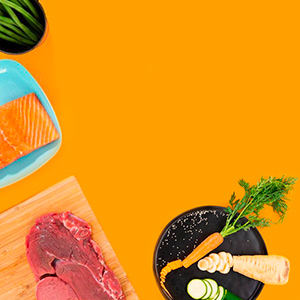
Physical activity
| Athletic | |
|---|---|
| Energy level | |
| Potential to play |
the Korean Jindo Dog isn’t hyperactive, but he doesn’t like idleness either. He is always enthusiastic about the idea of hunting and taking his long daily walk with his master.
Competitions
| Classifications & Standards |
|
Others
| Master character <span class="btnTooltip qTip2" title="- Calm: the master must be gentle and know how to show patience. – Active: the owner must be energetic and dynamic to live in harmony with his dog. – Hyperactive: the owner must be stimulating and very restless to suit the temperament of his dog.”> |
Active |
|---|
We talk on the forum
bam the dog now bam the dog’s revenge
Message from angeacorne
Amazing – a dog saves another dog
Message from Joo
My dog has doggy breath!
Message from Jérôme Bernier
My dog got into a fight with another dog and he got hurt …
Message from Nicole
How to train your dog to be a truffle dog
Guest message
Do you have a question about the Korean Jindo Dog?
Do not hesitate to ask Woopets visitors for advice on the forum!
FCI Information
FCI No.
334
FCI Group
Group 5: Spitz-type and primitive-type dogs
Recognized by FCI
Since 1955
</div


